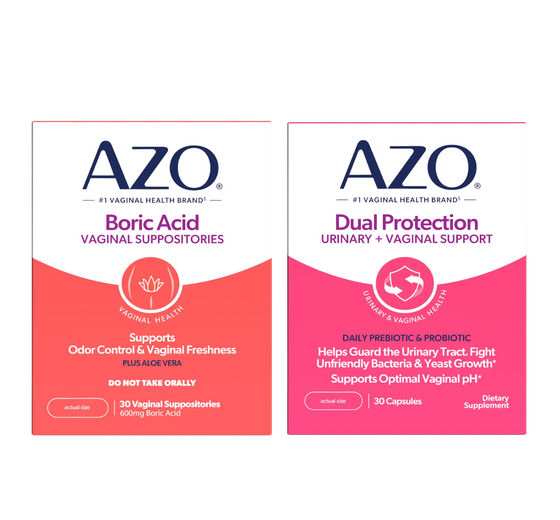
Face it ladies—if your vagina is unhappy, you’re likely in for a difficult time. Vaginal health is vital for our general wellbeing, not to mention our sexual health. Great news! The vagina is like a self-cleaning oven and has the potential to maintain a healthy balance of bacteria and yeast in most cases. This delicate pH balance can be enhanced with healthy diet, lifestyle habits and attention to detail when it comes to intimate hygiene.
Common vaginal health myths:
-
Myth 1: “The vagina requires vigorous scrubbing and washing.”
The vagina has natural self-cleansing mechanisms. Vigorous cleaning with highly fragrant or chemical-laden products is generally not needed. For those prone to yeast infections, a warm bath with plain, non-fragrant Epsom salt or oatmeal colloid is beneficial for itching or irritation of the vulva and vagina. After bathing, consider drying off using a blow dryer on a cool, low setting to aid in avoiding infection -
Myth 2: “All vaginal discharge is a yeast infection.”
Not all vaginal discharge means that you have a yeast infection. Vaginal yeast infections are typically characterized by itching, a thick white discharge and the absence of a foul odor. In general, most women have vaginal secretions, but the amount and consistency varies from person to person and can be impacted by the menstrual cycle and medications. Vaginal secretions that are unrelated to an infection can include cervical mucus produced around ovulation, a clear exudate produced by healthy vaginal tissue and physiologic secretions produced by glands in and around the vagina. -
Myth 3: “Personal lubricants are all the same.”
Be mindful of personal lubricants with harsh chemical ingredients. Vaginal lubricants with petroleum jelly or certain spermicides may lead to vaginal irritation and infection. If you are prone to yeast infections, avoid lubricants containing glycerin. -
Myth 4: “Clothing choice does not impact vaginal health.”
Yeast and bacteria thrive in dark, moist places, so avoiding certain types of clothing or products that reduce airflow and allowing the area to “breathe” can be beneficial. Avoid wearing confining pantyhose, non-cotton crotched panties, or 24/7 pad and pantiliner usage. Also, make sure to change out of wet bathing suits and gym clothes pronto for optimal vulvovaginal health. -
Myth 5: “The saying ‘you are what you eat’ does not apply to your vagina.”
If you are prone to yeast infections, make it a point to lower the amount of sugar and alcohol in your diet. Also consider taking a probiotic that has been shown to help maintain a healthy vaginal pH. -
Myth 6: “Yeast infections are not worth a trip to the doctor.”
Regardless of whether it is the first time you are experiencing symptoms or if you get them often, it is important to check in with your gynecologist to confirm whether or not you have a yeast infection (and also to rule out other health concerns). For symptom relief, consider using AZO Yeast® Plus, a helpful lactose-free, multi-benefit homeopathic formula which can help to alleviate the itching and burning symptoms associated with vaginal yeast infections.* Although AZO Yeast® Plus is not a cure, it provides yeast infection symptom relief from the occasional odor and discharge associated with such.*
A majority of women will experience at least one vaginal yeast infection in their lifetime and many will have repeat infections. Knowledge is key to helping to maintain vaginal health.
ABOUT DR. KIRA SCHMID HALAK:
Dr. Kira Schmid Halak received her doctorate in naturopathic medicine from Bastyr University in Seattle, WA. Dr Halak is Senior manager of global R&D (Research & Development) for the AZO and Estroven brands and is passionate about women’s health. She was also the scientific director for the integrative medicine textbook, Disease Prevention & Treatment, and she is often heard on national and regional health programs, as well as being a frequent contributor to widely read health and wellness publications.








